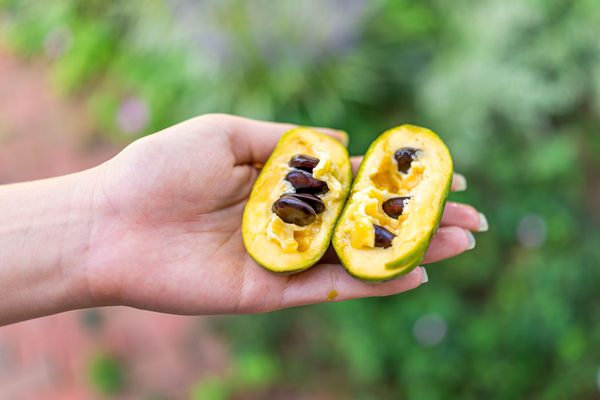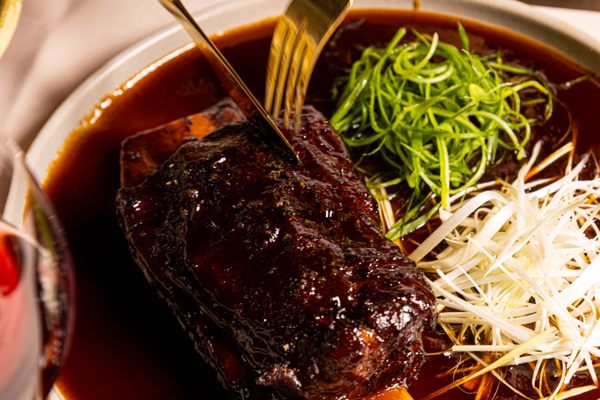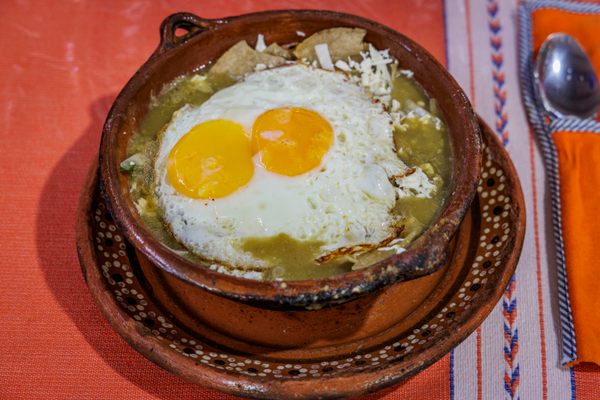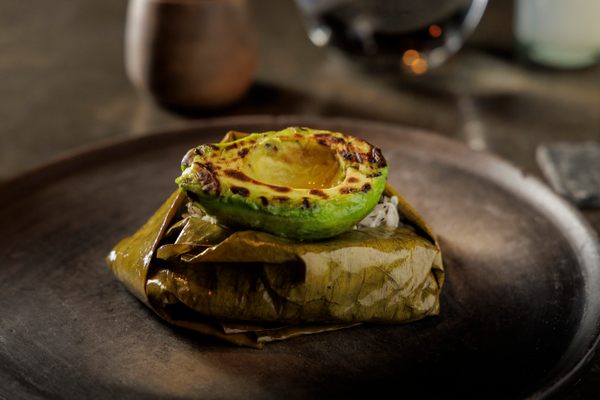When the Dried Plum Lobby Tried to Make Pruneburgers Happen
The fastest way to end a prune surplus? Puree them into school lunches.

Imagine it’s 2003, and hordes of sixth-graders are pouring into the school cafeteria to buy a new kind of lunch food: a hamburger made out of prunes.
That was the vision of the California Dried Plum Board, an organization that represents and lobbies on behalf of nearly 100,000 dried plum growers and packagers. Founded in 1952 as the California Prune Board, it’s less of a lobby than a marketing group—the outgrowth of a 1949 marketing order that allows for coordination among farmers and distributors of select agricultural products (including raisins, cranberries, and hazelnuts).
The California Dried Plum Board’s burger plan was radical: They wanted to turn patties made with prune puree into a staple of U.S. public school lunches.

At the time, the industry was in desperate need of a saving grace. Since the 1970s, growers had struggled with a prune surplus, but the problems reached a peak in 1995, when prune sales themselves began to shrivel. Fearing a precipitous drop in prices, the industry kicked into overdrive: They had to sell more prunes, and fast.
Rich Peterson, who had served as the Board’s executive director since 1986, was the man for the job. Under his leadership, the Board ditched their old marketing plan, which emphasized the high fiber content of prunes in order to attract older consumers seeking laxatives. Instead, the California Prune Board set their sights on younger generations, who they feared now too closely associated prunes with constipation relief. Their rebrand was simple: Instead of “prunes,” they would call their products “dried plums,” and they would change their name to the California Dried Plum Board. To Peterson, the move was propelled by rigorous study. “We didn’t go into this blindly,” he told Failure Magazine. “We had done some good research, and seventy percent of consumers preferred the name dried plums.”

Peterson enlisted Dan Haley, the Board’s Washington lobbyist, to sell the plan to the federal government. Haley’s impassioned pleas for Americans to adopt a more European view of prunes earned him coverage in The Washington Post. In Europe, he said, “younger people see any dried fruit as very healthy,” while in the U.S., “people see prunes as a laxative for oldsters.” With Haley’s help, the rebrand got off to a good start: In 2002, the FDA approved approved the name change.
But the new name wouldn’t be enough to draw hordes of fresh-faced, dried plum enthusiasts-to-be. They also needed a new product.
Enter pruneburgers.
Turns out, growing, harvesting, and drying plums is not a cheap process, and the industry had long lost money on small prunes, which customers ignored in favor of their bigger, juicier counterparts. Previously, the California Dried Plum Board had struck a deal with the FDA to remove from sale those money-losing prunes and grind them into animal feed. But now they had a better idea. They would instead puree them, inject them into beef patties, and sell them as healthy hamburgers to middle schools.
To solve the sales crisis, Peterson knew he needed the support of the United States Department of Agriculture, which regularly bought up prunes for food subsidies. If he and Haley could convince the USDA to dramatically increase its stake in prunes, they would end the surplus, stabilize prune prices, and add to the paychecks of prune growers and distributors. Creating a new class of healthy hamburgers seemed like the smartest way in.

The timing could not have been better. A panic about the nutritional value of public school lunches was setting in, and pruneburgers—which mixed ground beef with prune puree—promised less fat than regular burgers. And as Haley argued, they even tasted better: Most beef patties served in public schools were very dry (“like hockey pucks, Haley claimed), and burgers mixed with prune puree made for a softer, more pleasant eating experience.
The California Dried Plum Board wasted no time in printing brochures called “Prune the Fat” to promote the burger’s nutritional benefits. They also organized taste tests in public schools across the United States, including in California, Colorado, Maryland, Florida, and Washington, D.C.
According to Seattle PI, the pruneburgers received positive reviews: “The hamburger was good. It tastes like a grilled burger,” said a 12-year-old student. (Another culinary invention the USDA tested, “turkey-prune hot dogs,” also received high marks.)
Donna M. Wittrock, who oversaw food and nutrition in Denver’s public schools, had a similar reaction after watching 1,000 of her students do a blind taste test of pruneburgers. “It helps us reduce the fat in baked products and results in a product with better holding properties and general acceptability,” she said.
Though the local media’s insistence on describing the patties as “pruneburgers” frustrated an industry in the midst of rebranding, the taste tastes were very successful.
In 2003, Haley secured an impressive government contract. He convinced the USDA to buy 10 million pounds worth of prunes—a massive jump from the 360,000 pounds they had purchased in 2002—and funnel them into school lunches.

It was a coup, but Haley benefitted from precedent—the prune industry wasn’t solely responsible for fruitburgers. Bolstered by research from Jennifer Leheska, then of Texas Tech University, competitors were already racing to sell their own products. Leheska had found that meats fused with fruit contained more antioxidants and less fats than their fruitless counterparts. In 1999, public schools in Bloomington, Illinois, started serving burgers laced with cherries to their 58,000 students, and the blueberry industry tested their own product in Florida. Both cited potential health benefits.
Around 2006, though, attempts to introduce fruitburgers into schools appear to have ceased. Neither Leheska nor the current California Dried Plum Board leadership has an explanation for their disappearance, but in the case of the prune industry, a sudden drop in plum production was likely the cause. That year, American plum output fell 49%, a dramatic shortfall that cut into the surplus around which the industry planned its entire pruneburger strategy. As The Washington Post noted at the time, “Many of [the prune industry’s] efforts are expected to be scaled back this year because of the projected inventory shortfall.”
“It’s frustrating because we think there are opportunities for expanding our sales,” Peterson, who has since retired, said at the time. “But you can’t fully capitalize on that when you have low inventories.”
Instead, the Dried Plum Board shifted its surprising lobbying might to convincing then-Governor Arnold Schwarzenegger to declare January “California Dried Plum Digestive Health Month” in 2007, and, in 2012, signing up former Olympic swimmer Natalie Coughlin as a spokesperson for prunes.
Today, despite the disappearance of hamburgers made with prunes, at least one fruitburger is still thriving: cherry burgers. Recipes and reviews abound on the internet, and many of them rave about the taste and health benefits. At The Cherry Hut in Michigan, for instance, you can order a hand-pattied cherry burger, which the menu proudly proclaims offers “65% less fat than ground beef!”
Peterson would have been surprised. In 1999, he claimed cherry burgers were doomed to fail because they looked undercooked. But it’s the cherry, not the prune, that weathered the fruitburger trend and snuck its way into American cuisine.
Gastro Obscura covers the world’s most wondrous food and drink.
Sign up for our regular newsletter.

























Follow us on Twitter to get the latest on the world's hidden wonders.
Like us on Facebook to get the latest on the world's hidden wonders.
Follow us on Twitter Like us on Facebook